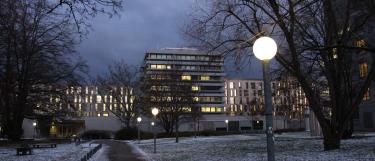
History and mission
The Centre for Organismal Studies Heidelberg (COS Heidelberg) was founded in 2010 by the merger of the Institute for Zoology and the Heidelberg Institute for Plant Sciences.
The mission of COS Heidelberg is to understand the basic molecular and cellular mechanisms that govern development, physiology and evolution of organisms and their interaction with the environment. COS Heidelberg is the biggest life science research centre at the University and as a centre directly reports to the rector of Heidelberg University. Research is organized in 14 departments (left navigation bar) with currently 40 research groups by more than 170 University funded staff members and a comparable number of scientist supported by third party funding. These groups perform basic scientific research and contribute to the teaching of students at graduate and undergraduate level. PhD students of all research groups are members of the COS Graduate Program under the roof of the Hartmut Hoffmann-Berling International Graduate School (HBIGS).
Core Facilities associated with COS Heidelberg support not only internal but also external research groups located at the Heidelberg research campus. The Core Facilities are part of the CellNetworks Exzellenzcluster and supported by the Heidelberg Molecular Life Science research council. Research Groups and Core Facilities of COS Heidelberg are locally-organized at the Campus Neuenheimer Feld (navigation button: How to find us). The Zoological Collection of the University of Heidelberg is integral infrastructure of COS Heidelberg. The Botanical Garden and Herbarium Heidelberg (HEID) dates back to the 16th century and is also closely associated with COS.



